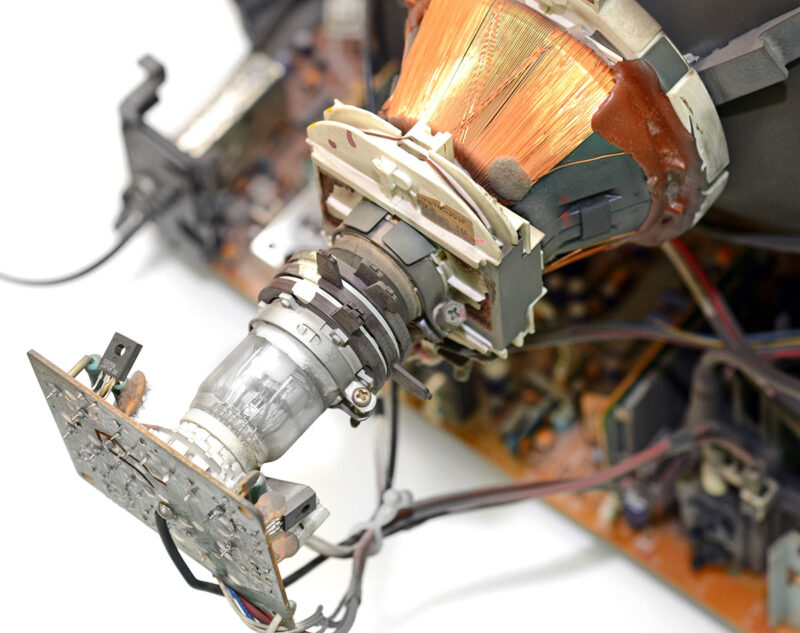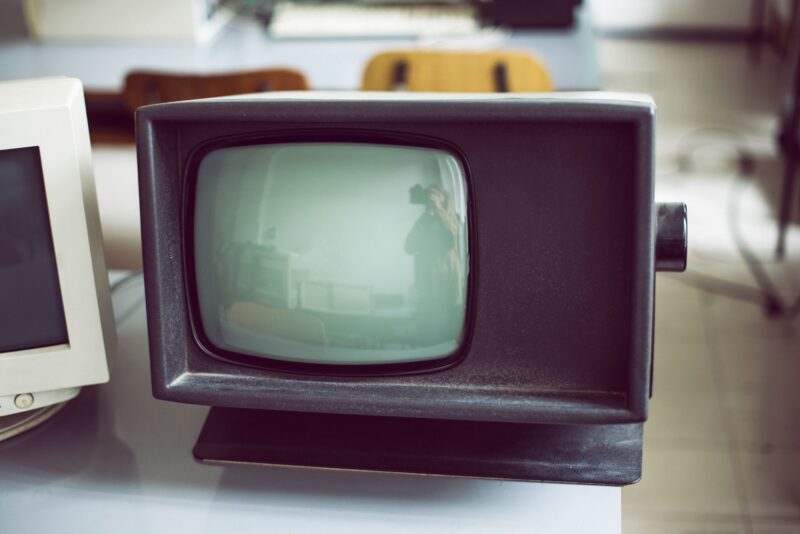Many people have been calling for the end of CRT screens. They are bulky, power hungry, and emit a lot of radiation. The use of LCD screens has been rising in recent years as they are more energy efficient and can be made thinner.
Cathode Ray Tube (CRT) is an outdated technology that was used in televisions before the advent of flat-screen TVs.
Everyone has seen television/computer picture tubes. Have you ever considered how the image on the television screen is created? It’s all due to the CRT (in any mode) that was utilized in them. The abbreviation CRT stands for Cathode Ray Tube. CRTs come in five different types, each with its own set of components:
- Electron cannon
- Anodes
- Plates of horizontal deflection
- Plates for vertical deflection
- Screen
Operation
The electron gun of a CRT produces an extremely high-intensity electron beam. This beam is concentrated and propelled towards the screen as it travels via anodes. The anodes are charged positively. After being concentrated and accelerated, the electrons travel through the anode and hit a screen with a Phosphor coating on the inner surface. As may be seen from the CRT’s face, the Phosphor shines brightly.
We will only obtain a bright spot in the middle of the screen if we do not utilize deflection of the electron beam around the CRT screen. The ability to show different images is due to the deflection of the beam.
The following techniques may be used to deflect a beam:

- Magnetic field deflection: Coils are utilized instead of deflection plates in this kind of deflection. The beam changes direction at right angles to the magnetic lines of flux as electricity is supplied through these coils. The magnetic field produced will be proportionate to the current flowing through the coils. The larger the magnetic field, and therefore the further the beam is deflected, the higher the current. This technique employs two coils. The horizontal deflection is achieved with one coil, while the vertical deflection is achieved with the other. Rather of being put within the tube neck like deflection plates, these coils may be placed on the outside.
- Deflecting plates are used in lieu of coils in the electrostatic field deflection technique. Because of the electrons, the electron beam has a negative charge. As a result, the electron beam is attracted to positive deflecting plates while being repulsed by negative deflecting plates. Two sets of deflecting plates are utilized in this technique. The horizontal plane is covered by one plate, while the vertical plane is covered by the other. We can get greater deflection simply by raising voltage since the electrostatic field rises with the increase in voltage.
Cathode Ray Tube (CRT) is a device that uses an electron gun to create a beam of electrons which are accelerated across a vacuum gap between two metal electrodes heated by a filament. The beam, which includes both electrons and visible light, is deflected on to the screen where it creates an image. Reference: crt display.
Frequently Asked Questions

What is the use of cathode ray tube?
Cathode ray tubes are used in televisions, computer monitors and other electronic devices to display images.
How does a cathode ray tube work?
Cathode ray tubes are vacuum-tube devices that use a cathode ray to create an image on the inside of the tube.
What is a cathode ray tube and why is it important?
A cathode ray tube is a device that emits electrons in order to create an image on a screen. Its important because it was the first type of screen used in TVs and monitors.



